I took this job at EPS for the people. This is my fourth high school and my 8th institution where I have taught. Through the experiences at each school, I have learned that your colleagues can make or break your experience, your growth and your performance. It is important to me to have freedom to grow, to make mistakes and to be challenged by others around me. In my interview at EPS, I saw things that were different than what I had seen before at other schools especially in that the kids knew the mission of the school that also resonates with me: Think critically, Act responsibly, Lead compassionately and Innovate wisely. I also saw faculty that had freedom to explore and make changes and grow as their professional experiences grew. But most importantly, I saw camaraderie underlying that freedom. As a growing institution itself, EPS embodied what I saw in its faculty and in the classrooms…freedom. Yet, with freedom comes a certain amount of what I will lovingly refer to as chaos. Communication is not always rock solid. There is a lot to joining the culture of EPS and we know that. The first year, we say that we give new faculty a chance to get to know the culture and don’t throw in a lot of extra asks. This is fair and, yet, still this was the most difficult on-boarding experience that I have had in all 8 institutions. Why? Some of it is obvious….new technologies to learn, new procedures, new faces, etc. That alone is enough but there are also MANY three letter acronyms, many more meetings than I have ever had even in my first year and more unspoken expectations on participation or performance that are not always clear. So as a new faculty member, I followed the main path only to realize that I could make off-shoots that headed in the same direction but allowed me to forge a path forward that was my own with the integrity of the mission and goals of the institution at large. This path was forged with the encouragement of what our PDP refers to as relational cultivation.
Collegial Dynamics
One of my favorite things about EPS and why I was so excited to work here are the people. I have loved my working relationships that all involved collaboration with these wonderful people. I have had the pleasure of teaching multiple courses with various teachers. Shout-out to my Algebra 2 crew over my first years at EPS- Steve Fassino and Bert Loosmore. To my chemistry colleagues-Nickie Wallace and David Lao. My biology peers who exhibited much patience bringing me back up to speed-Adam Waltzer and Kip Wassink. These folks are people that I had nearly daily interaction as we worked together to bring the best classroom experience for students.
(1) develops mutually respectful and productive relationships with colleagues
In the survey to illicit responses from peers for my PDP, Adrienne Behrmann wrote,
“Although I have not taught any courses with Anne, I have observed that she has been quick to form close working relationships with others teaching Chemistry, notably Nickie Wallace and David Lao. She is clearly well-respected by her colleagues and she works collaboratively with others. She has a wealth of knowledge and experience in her field and is always willing to share and encourage others to hone their craft. “
I am always touched when people that I have not worked with can see how important my collaborative working relationships are in my professional practice. Even though I gave a shout-out to my course collaborators, every colleague at EPS contributes a wealth of support and knowledge that helps me grow in my own professional development and design of classroom experiences, This is true everywhere that I have worked but it is especially nice at EPS as our sense of community and collaboration makes it easy to run ideas past a humanities colleague during an informal lunch setting. These images represent a variety of opportunities that arose through collaborations and the building of relationship beyond the classroom, RBC. 😉
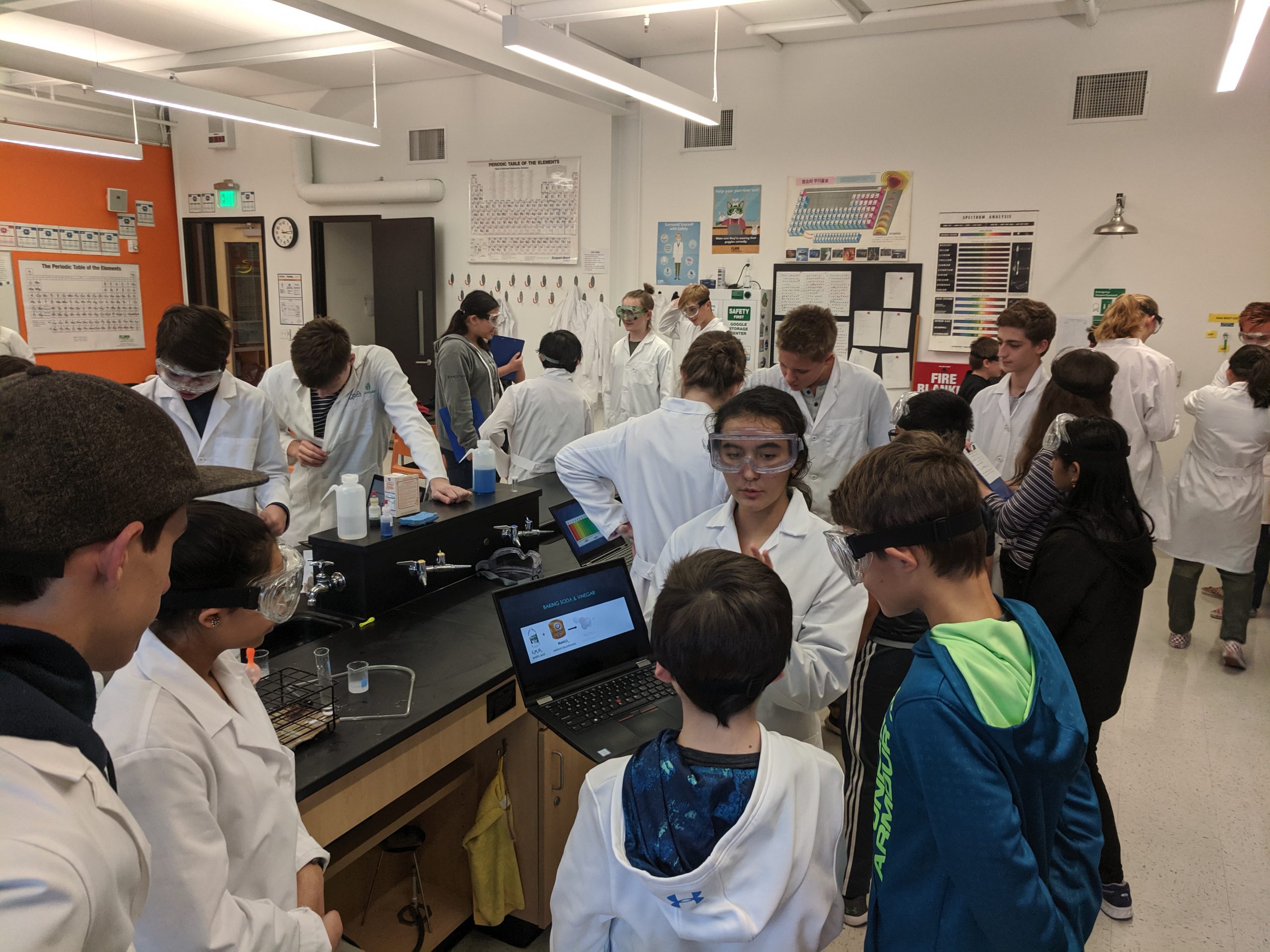
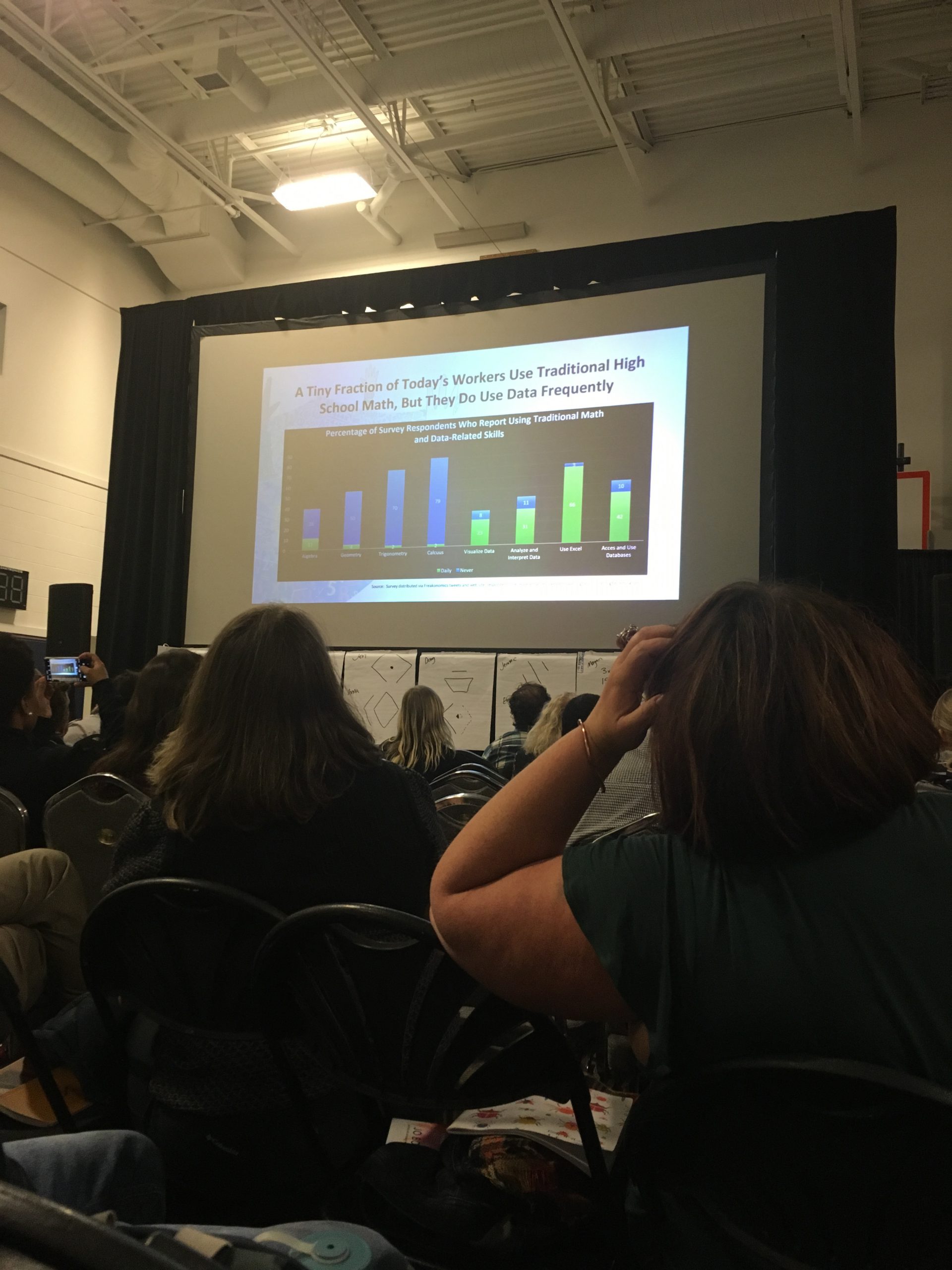
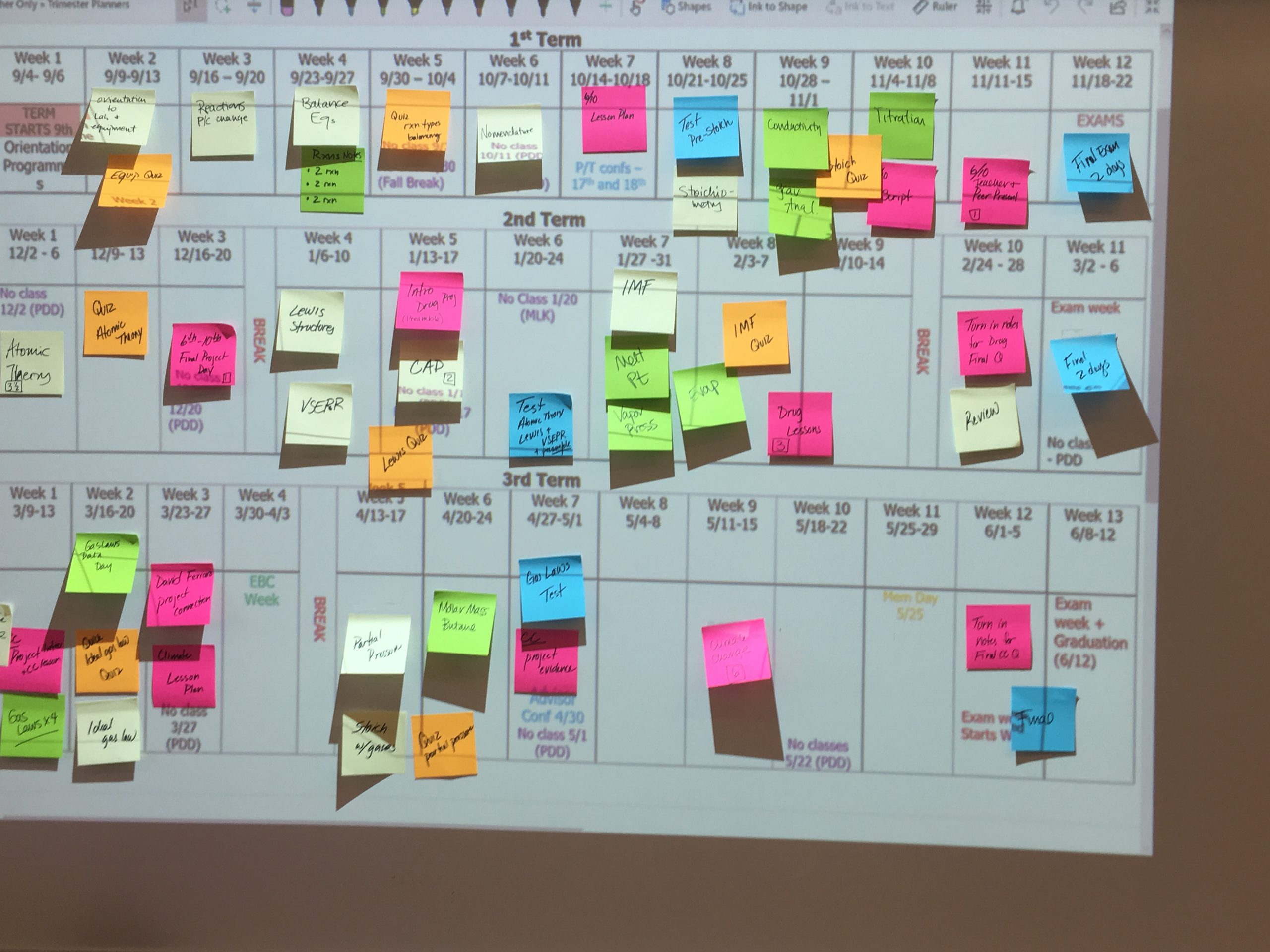
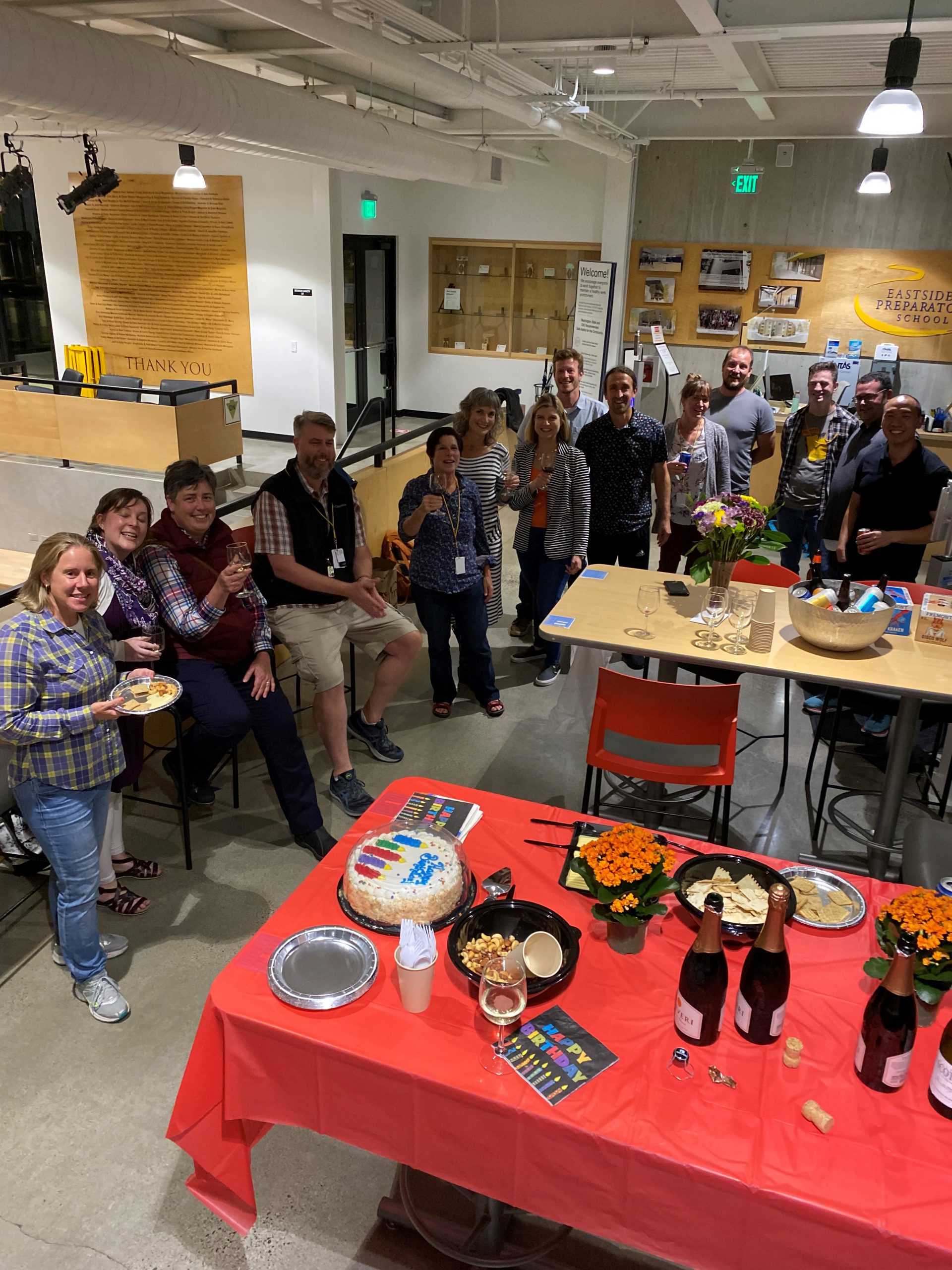
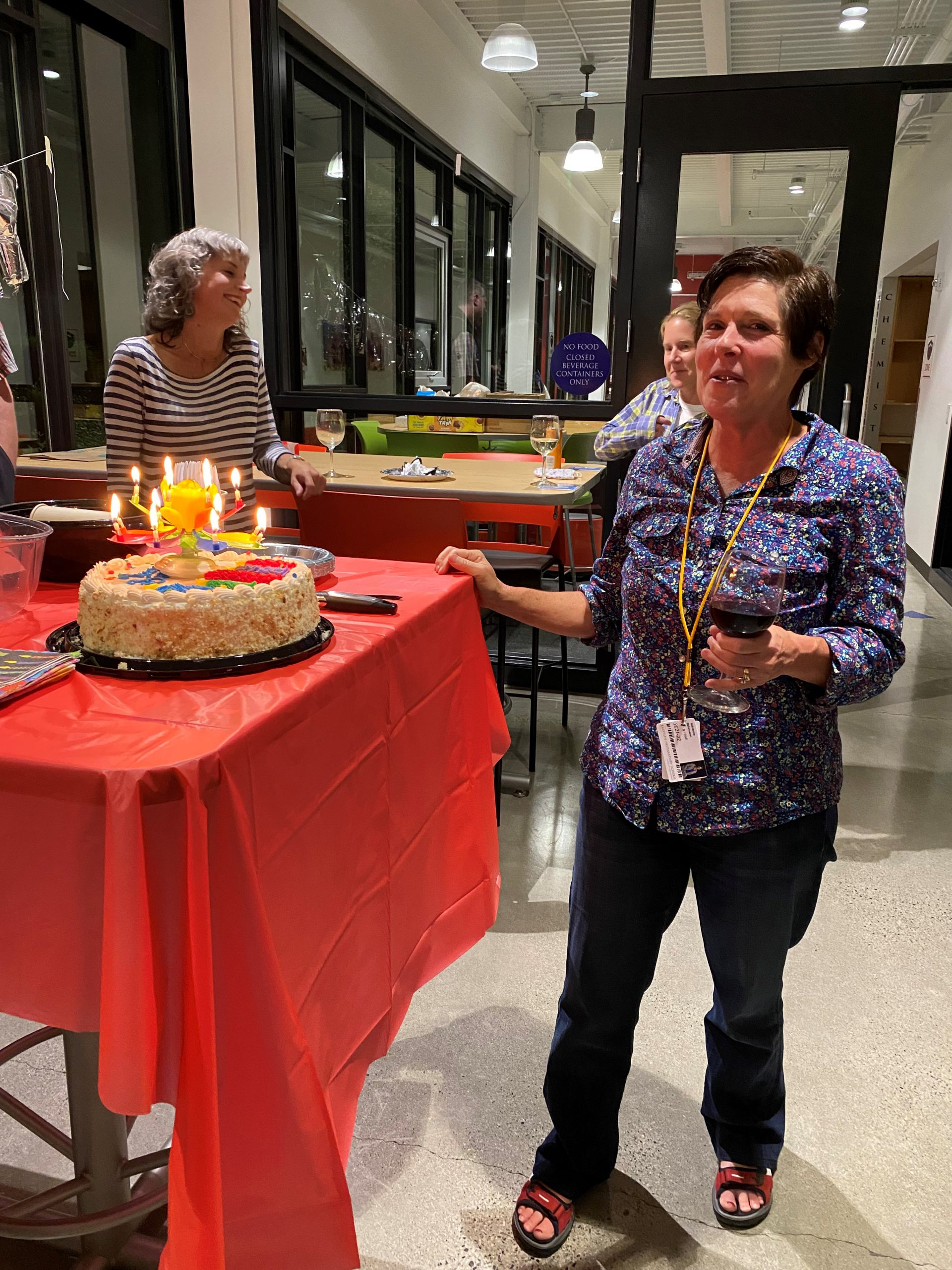
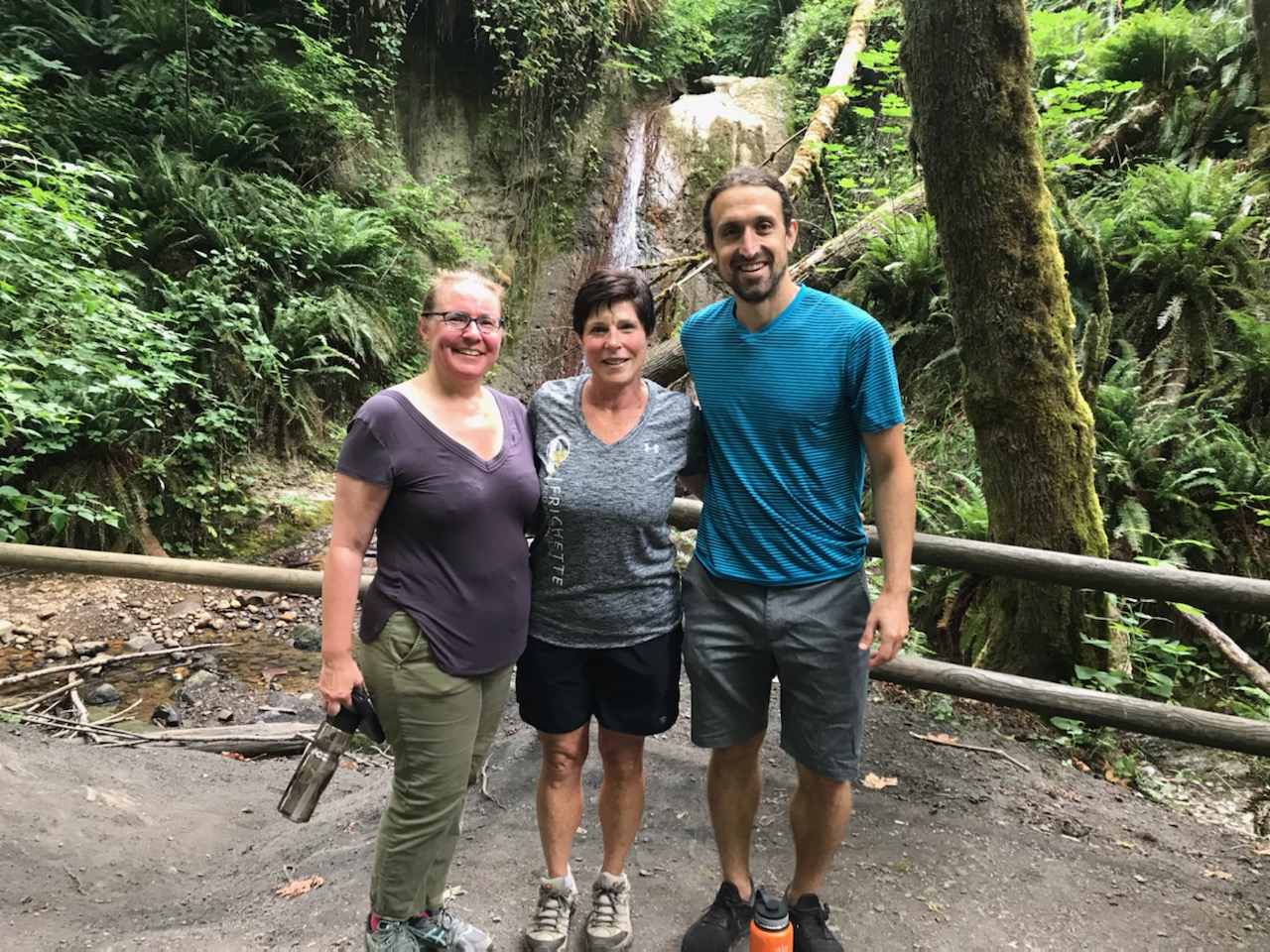
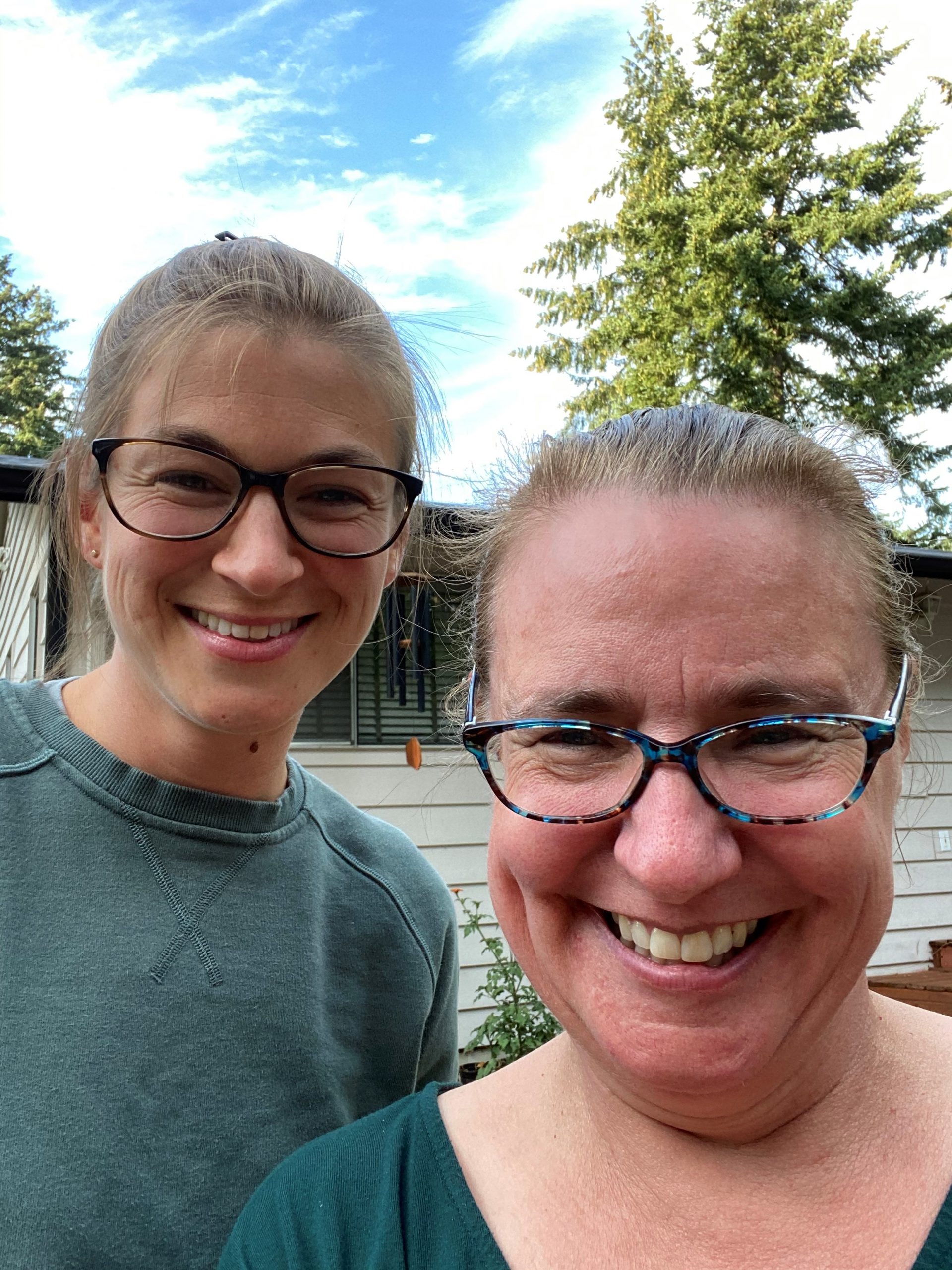
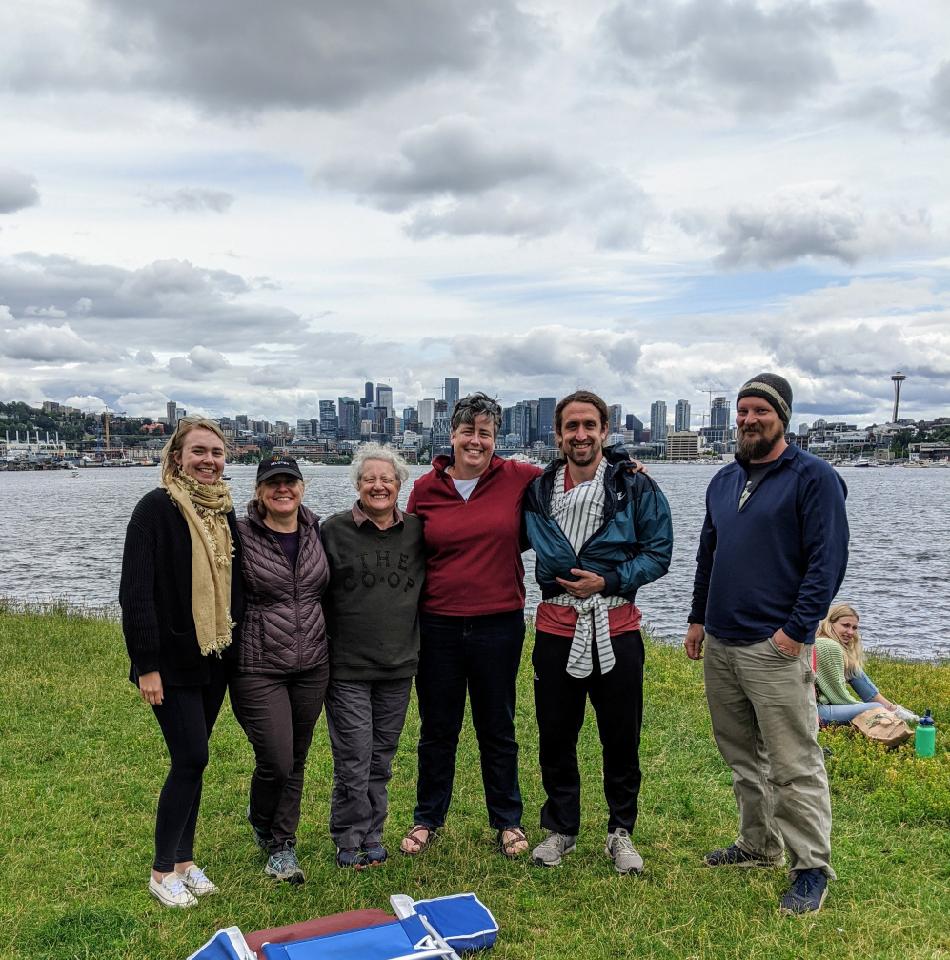
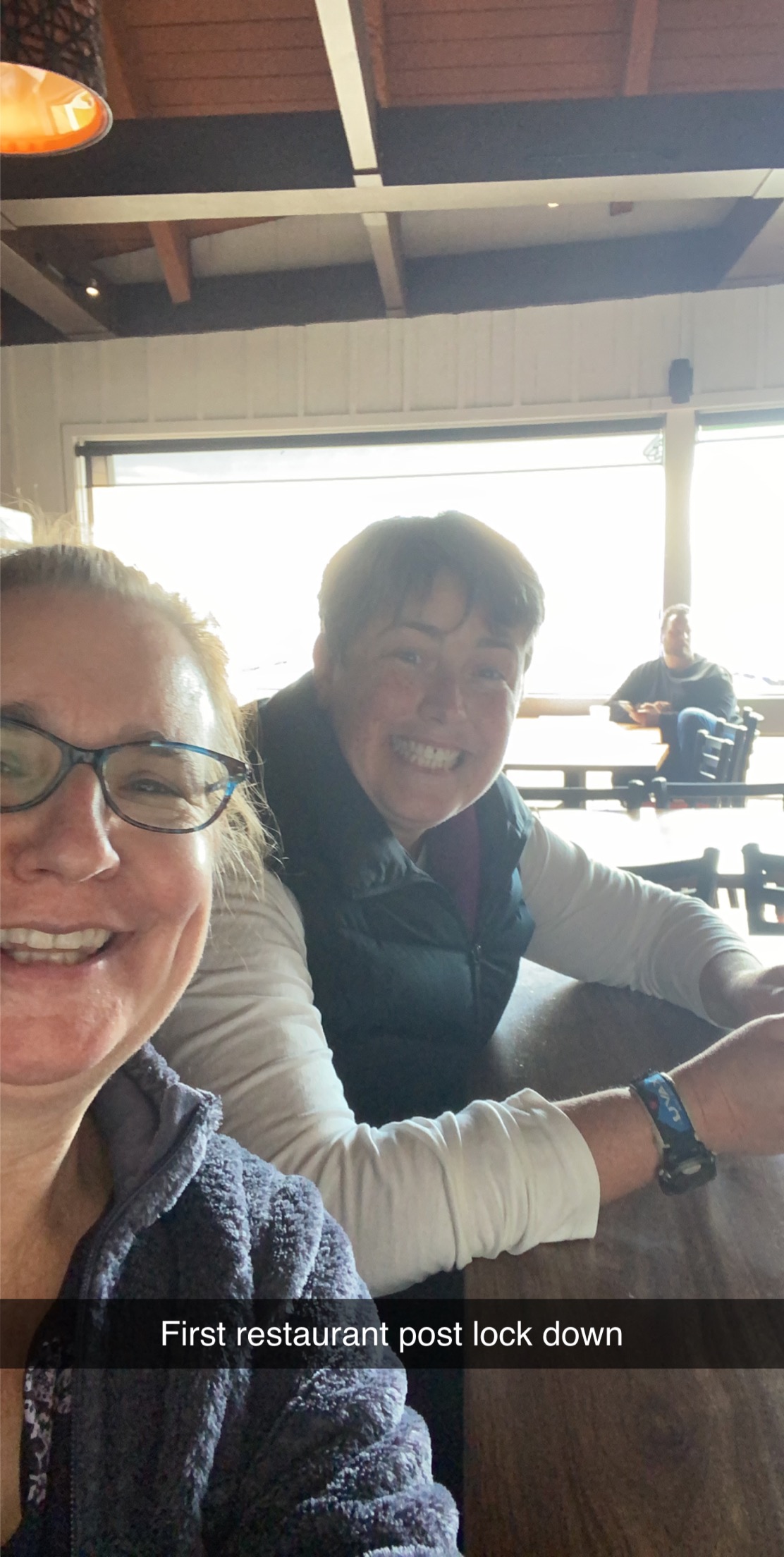
(2) partners consistently with colleagues on projects (i.e., integration, service learning)
One of the main projects that has continued during my time at EPS is the 6th/10th grade project with Krissy Russell where 10th grade students become experts in one of six types of chemical reactions and then produce a mini-lesson to teach 6th grade students. This is a project that we were even able to modify during our remote year using Flipgrid. The following quotes from colleagues are from a survey conducted in preparation for my PDP How have you observed Anne partnering consistently with colleagues on projects (i.e., integration, service learning)? and show the value added to the EPS community.
“A great partnership I have witnessed is the 6th/10th grade science collaboration, in which Anne and Krissy have created an experience that puts the Upper School students in a leadership and mentoring role for the 6th graders, while they learn about foundational scientific content that aids them in ST1. This is a highlight for me each year; Anne turns “control” of the class over to the older kids, and they are nervous as heck when the younger students arrive. This kind of collegial collaboration TAKES TIME and intentionality, as well as the ability to compromise and work well with others.” Sam Uzwack
“I have partnered directly with Anne for three years on 6th physical science / 10th chemistry integration. During the first two years, Anne organized for her students to present mini chemistry lessons (complete with experiments) to my students. Because we were remote, the third year Anne organized for her students to video themselves doing experiments so that my students could watch them. In addition, in the second year of collaboration, Anne was open to allowing her students to mentor my students on a presentation they were working on. The overall experience of collaborating with Anne is not only smooth, but enjoyable. She has creative ideas and is open to hearing my ideas as well. Her students are well prepared and it’s clear that the experience for all of the students in the collaboration is deep and rich due to her efforts.” Krissy Russell
The images here represent collaborations beyond the classroom during Fall Orientations, EBC service day and EBC week. Each of these experience provided opportunities for me to work with colleagues beyond my daily collaborations.
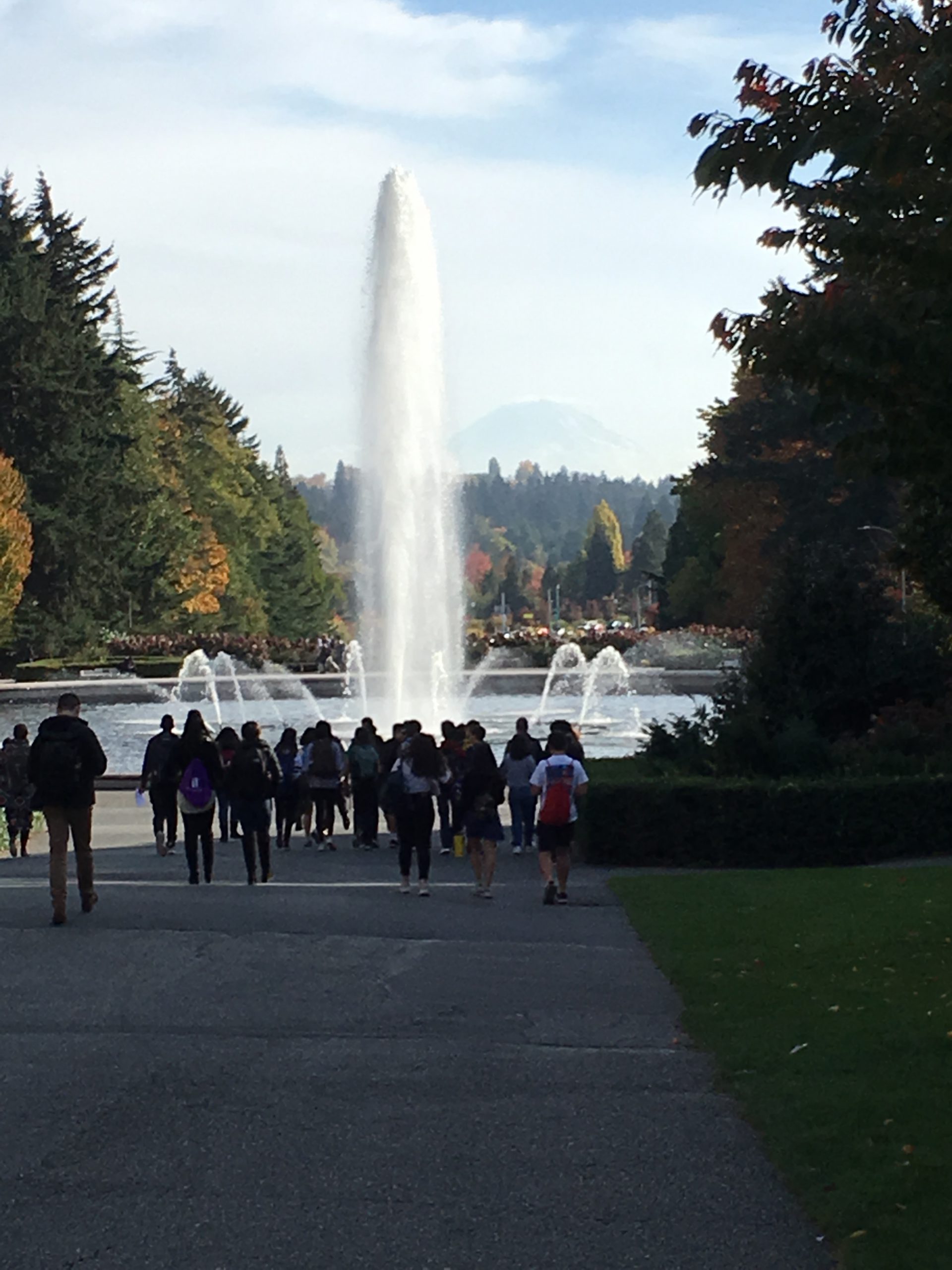
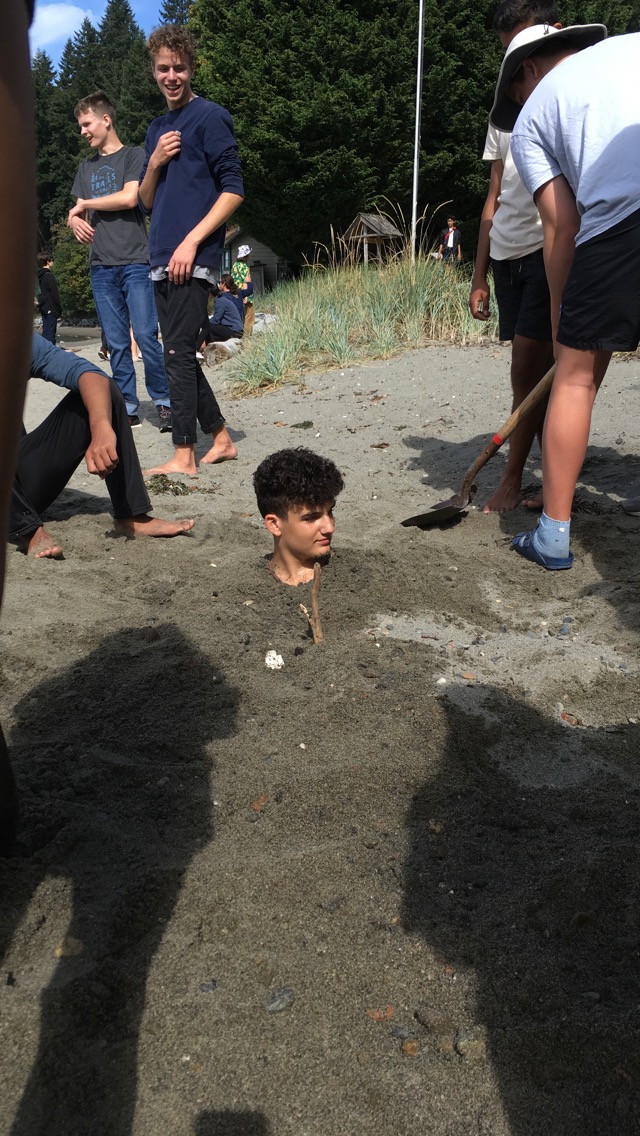
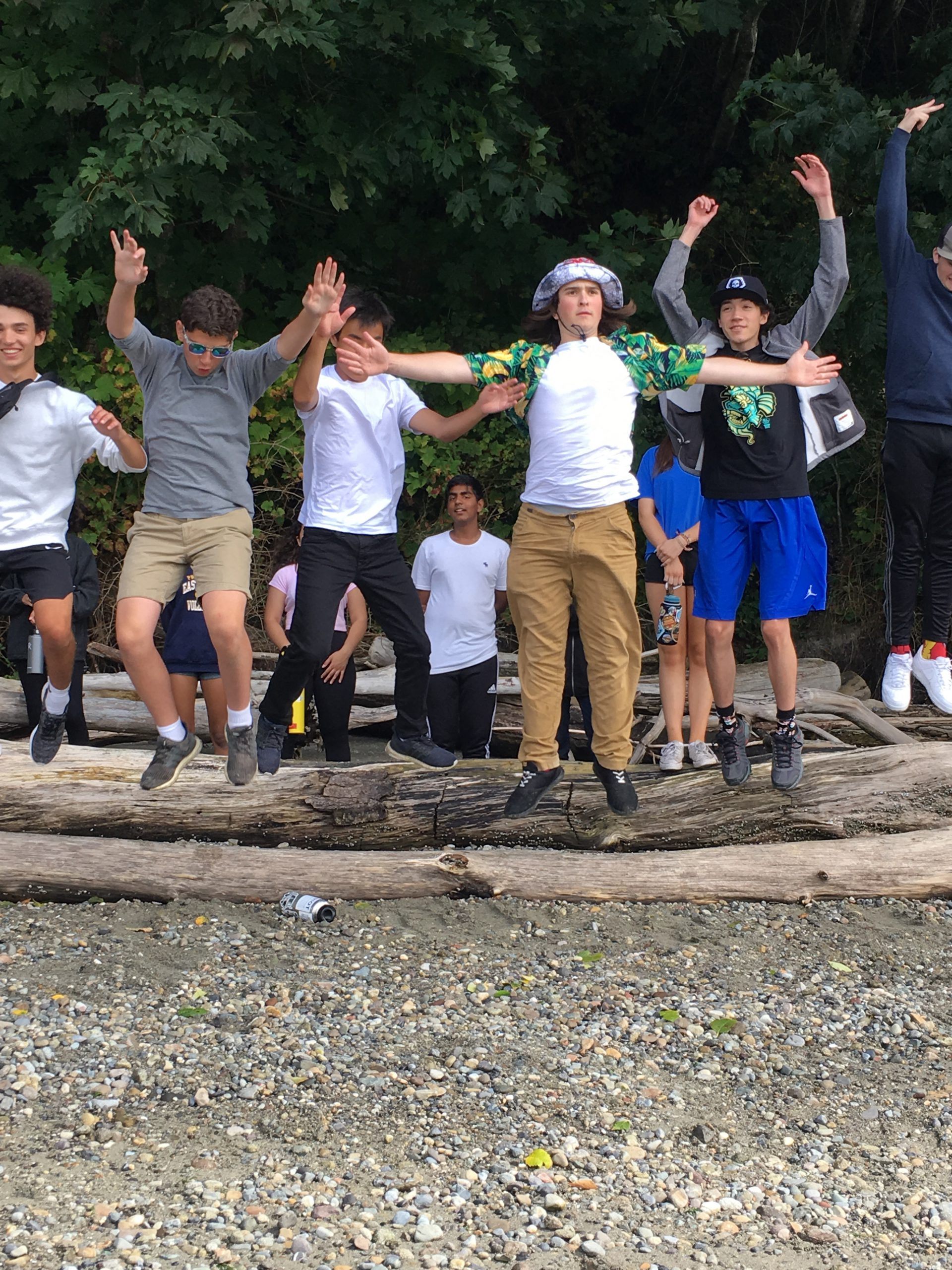
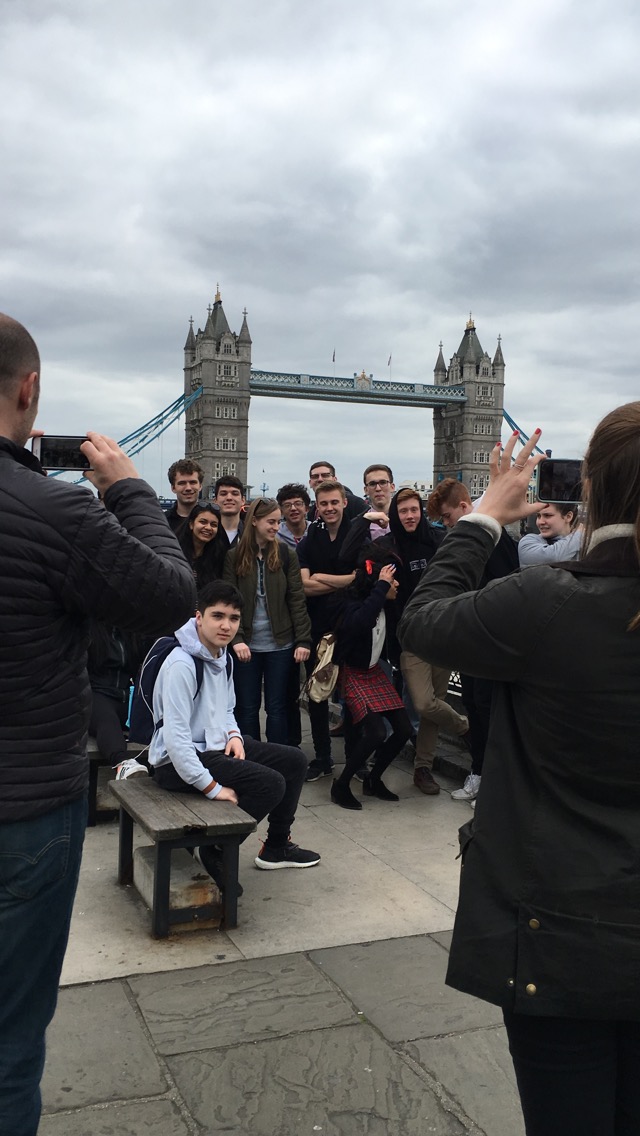
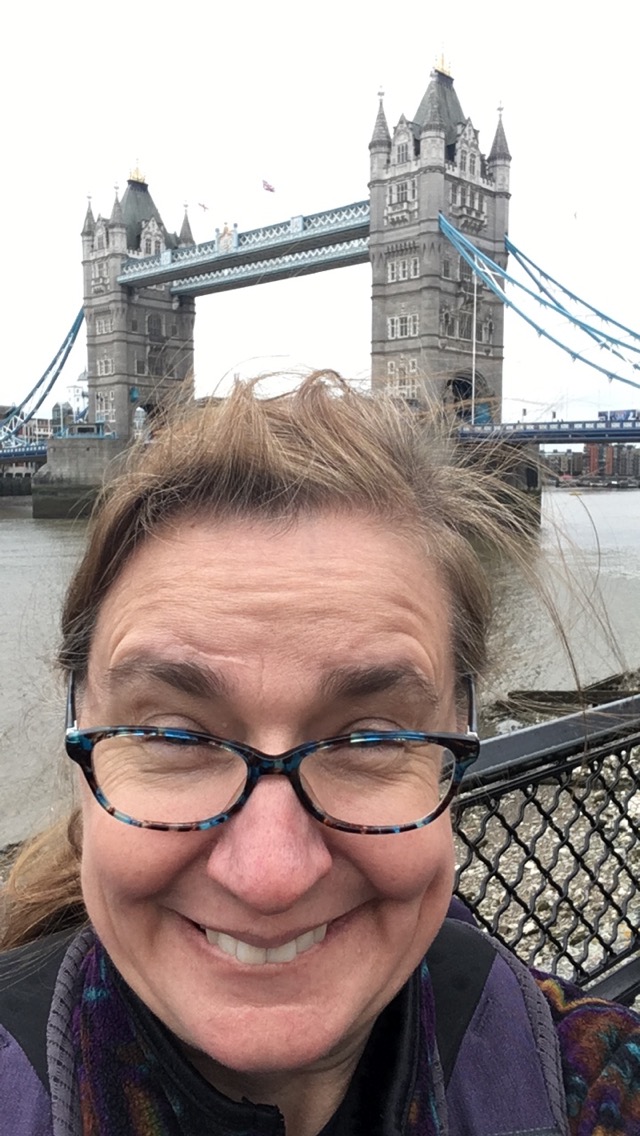
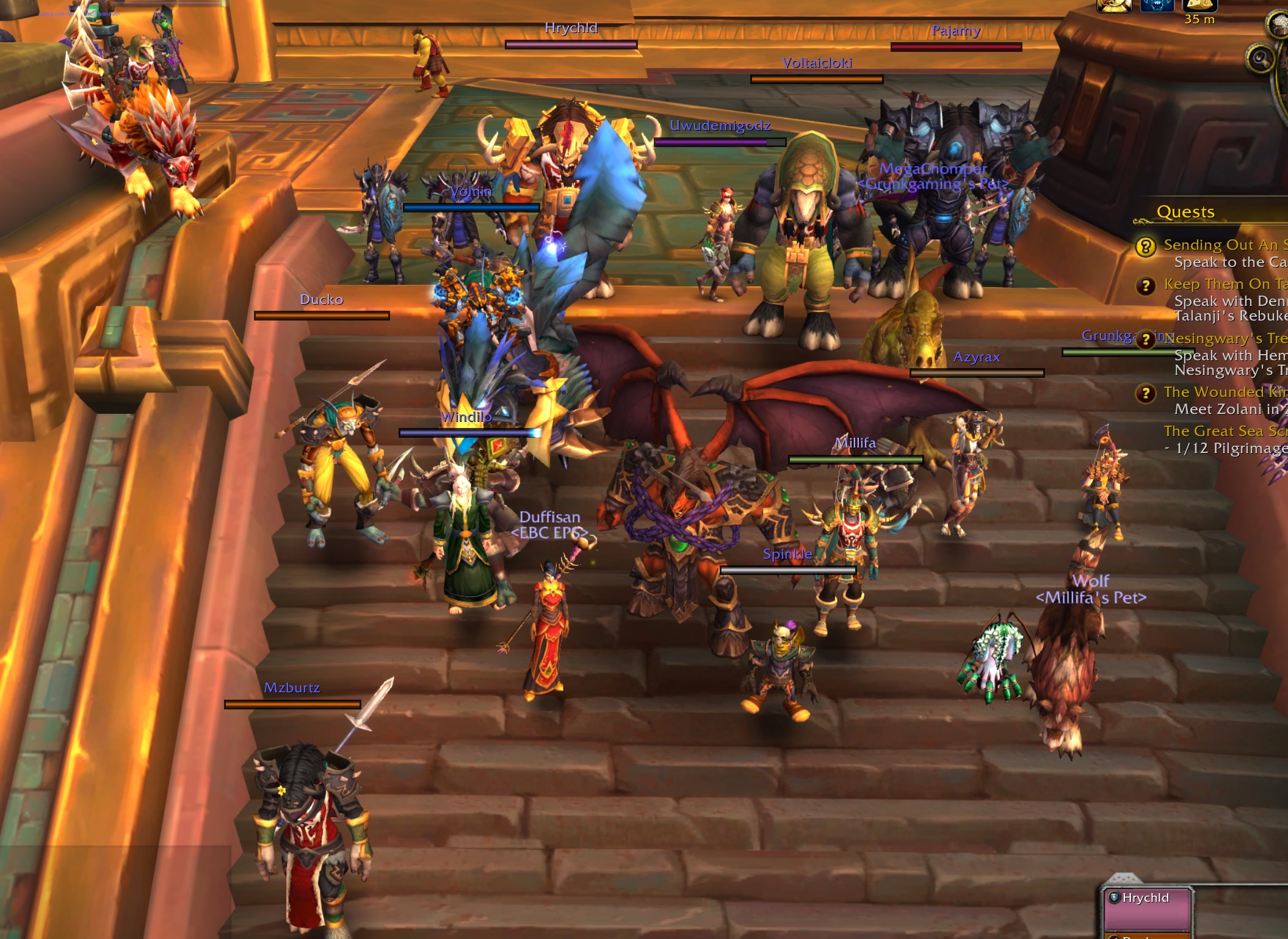
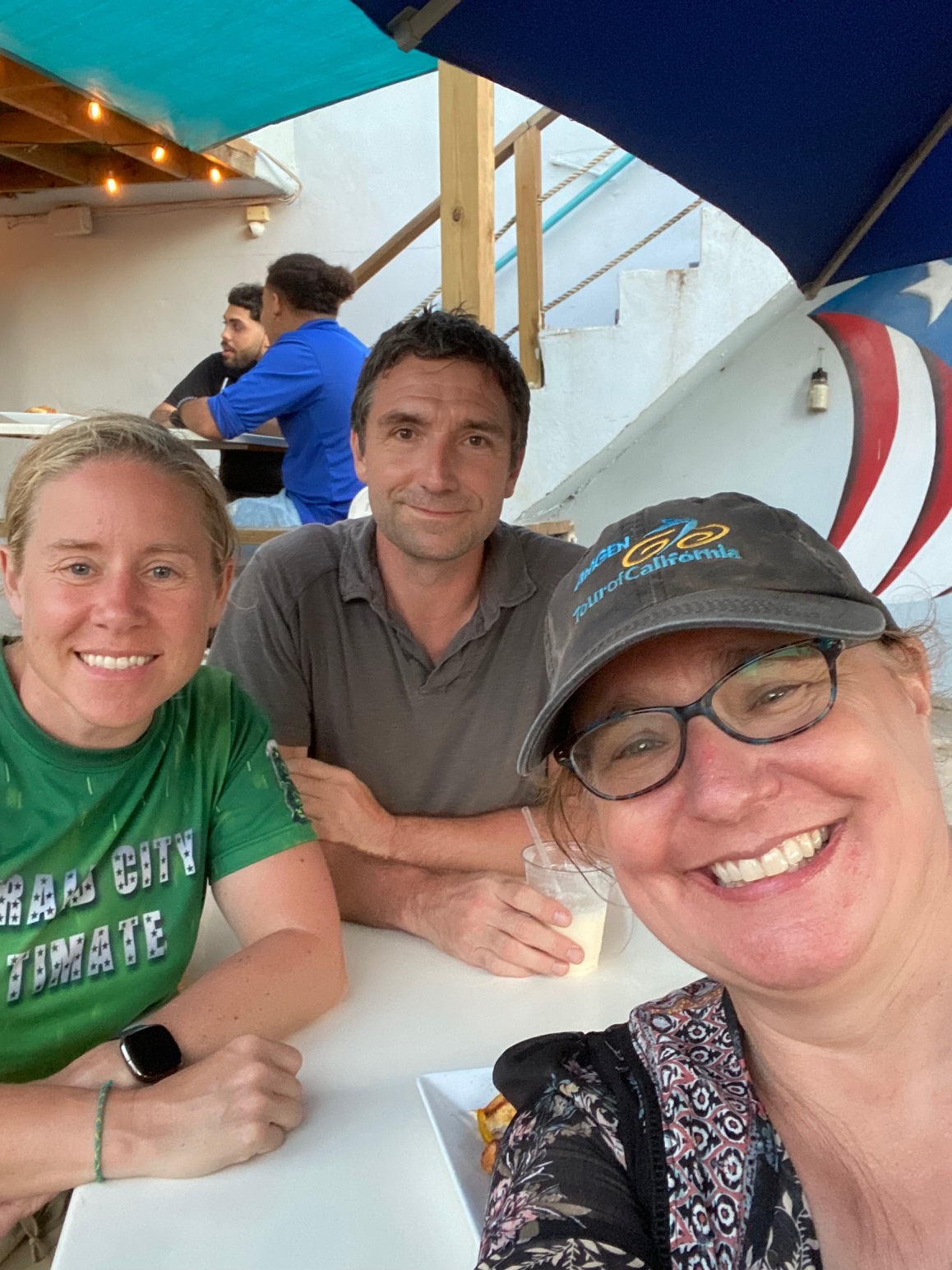
(3) engages in collegial activities hosted by the school
Yes, please! The informal times without students around is when you really build relationship. Sharing stories, drinks, laughs and sometimes tears helps build and foster the trust and respect for colleagues that you know are just as invested in student growth as I am.
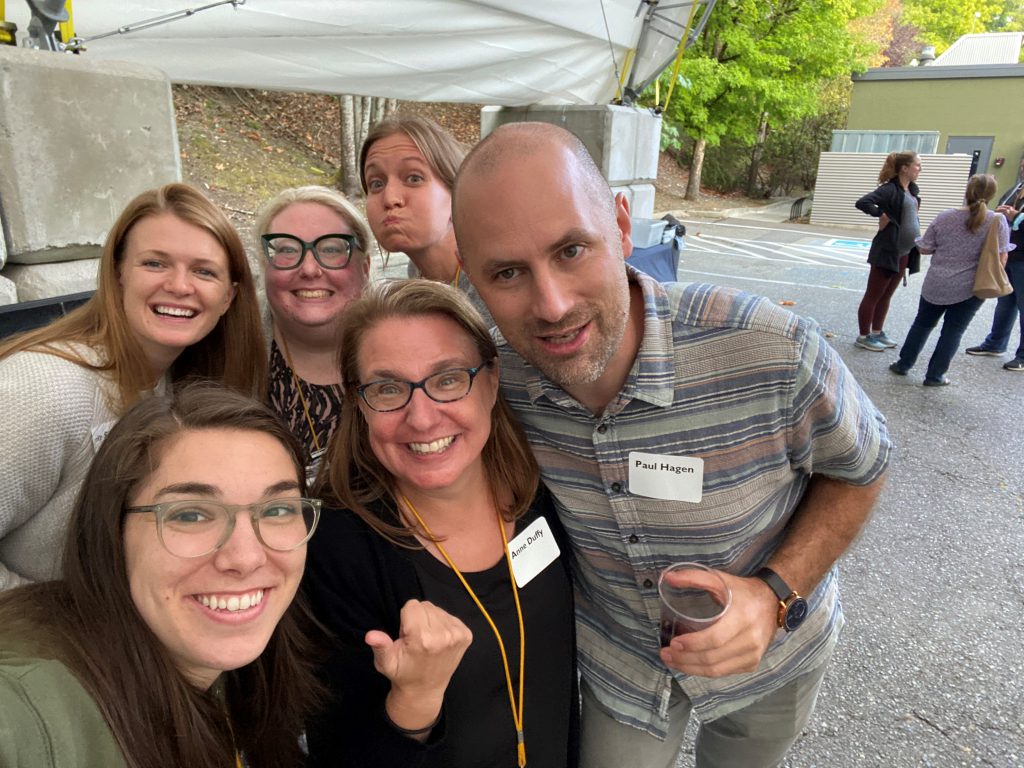
Community Membership & Support
When you join a school, you hopefully got a sense of the culture and community before you accepted the position. This includes your peers, the students, the parents, the staff and the administration. As EPS is my fourth high school that I have worked at, I have seen multiple versions of community and culture. At every school, we are expected to highlight strengths of the community during open house events and showcase the opportunities that are present. At EPS, community plays a bigger part in our culture than I have experienced in most schools. One of the biggest differences is that the faculty do not hide out in their classrooms. We have shared offices. We eat together in the LPC or outside if the weather is nice. We are a community and with our interactions comes the support and camaraderie.
(1) acts as a strong and positive ambassador for EPS
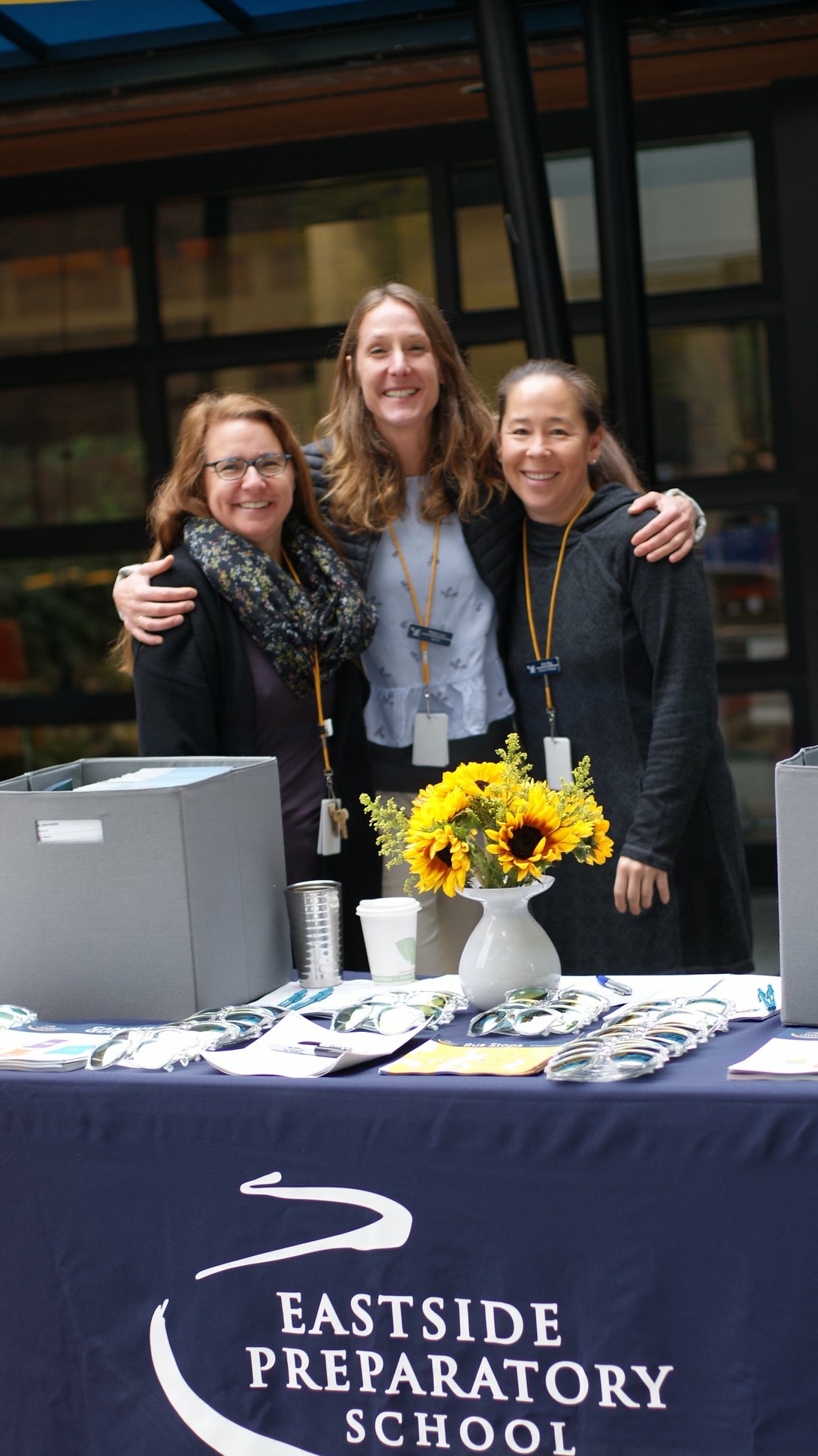
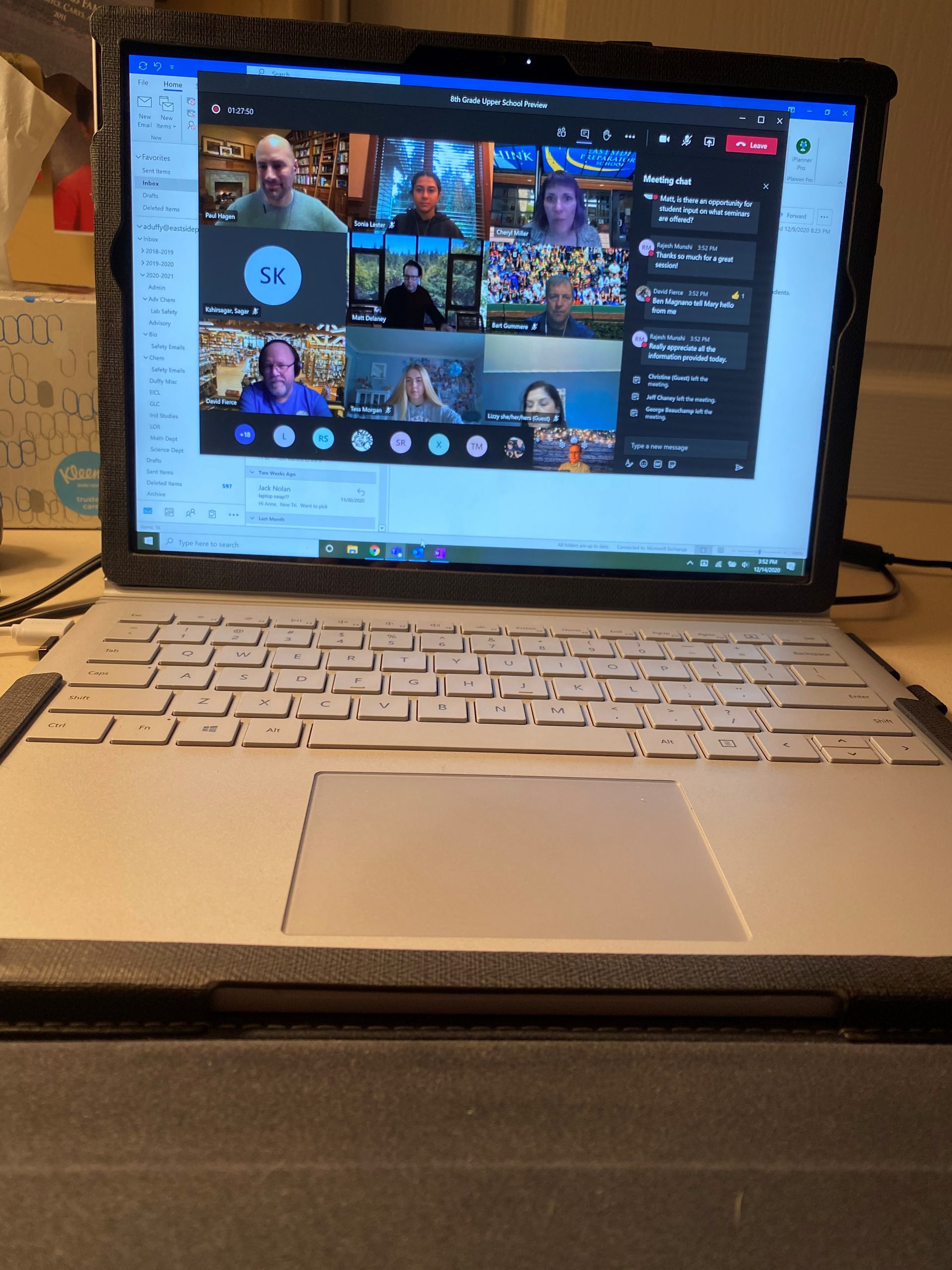
I should really have a picture of me wearing the EPS The North Face vest that we got at the beginning of the 2021-2022. I wear that like a uniform so anytime I go somewhere after school, I essentially act as an ambassador for EPS. I have had countless conversations at Costco, Trader Joes or other places where someone will see the logo on my vest and start up a conversation. What the images show are times when I have participated in admissions events either at an open house in the fall or as a participant in an online panel for rising EPS 8th graders.
In a survey sent to colleagues in preparation for my PDP, one prompt asks How have you observed Anne acting as a strong and positive ambassador for EPS? On response that stands out is from Caitlyn McLane who teaches Upper School history. She wrote:
“One of my favorite aspects of Anne is that she “walks the walk” and can really speak to the experience of being a full-time teacher in the classroom trenches (sorry for the military metaphor). She has developed curriculum and courses at EPS, supported students across the learning spectrum, and is highly dedicated to her discipline and the craft of teaching. She can speak to many aspects of the EPS experience first-hand and her hard work, effort, and dedication comes through in her responses. She has high standards for herself, her students, and her colleagues, and these standards help raise the bar of inquiry and achievement at EPS. A true “master teacher,” Anne models the skills of an experiences classroom teacher and she generously mentors fellow teachers, no matter the career phase they are in.”
One of the reasons that this stands out is that Caitlyn is in a different division of the Upper School and I was surprised and honored to read her insight.
(2) attends school events and student performances (i.e., arts, athletics, social)
This is where I obviously need to take more pictures. I have attended all US Plays and many MS plays, most of the music events and some sports events especially when invited by a student. In my personal life, I am less a sports fan and more a supporter of the arts so I tend to gravitate towards my personal preferences. That being said, if the sporting event is convenient (at school) or on my way home, I am more likely to attend. So I have been to several basketball and volleyball games at EPS as well as ultimate frisbee when they are at Marymoor park. Below is an image of my fellow PDP cohort peer, Kattie Dodd, at the US fall play in 2021.
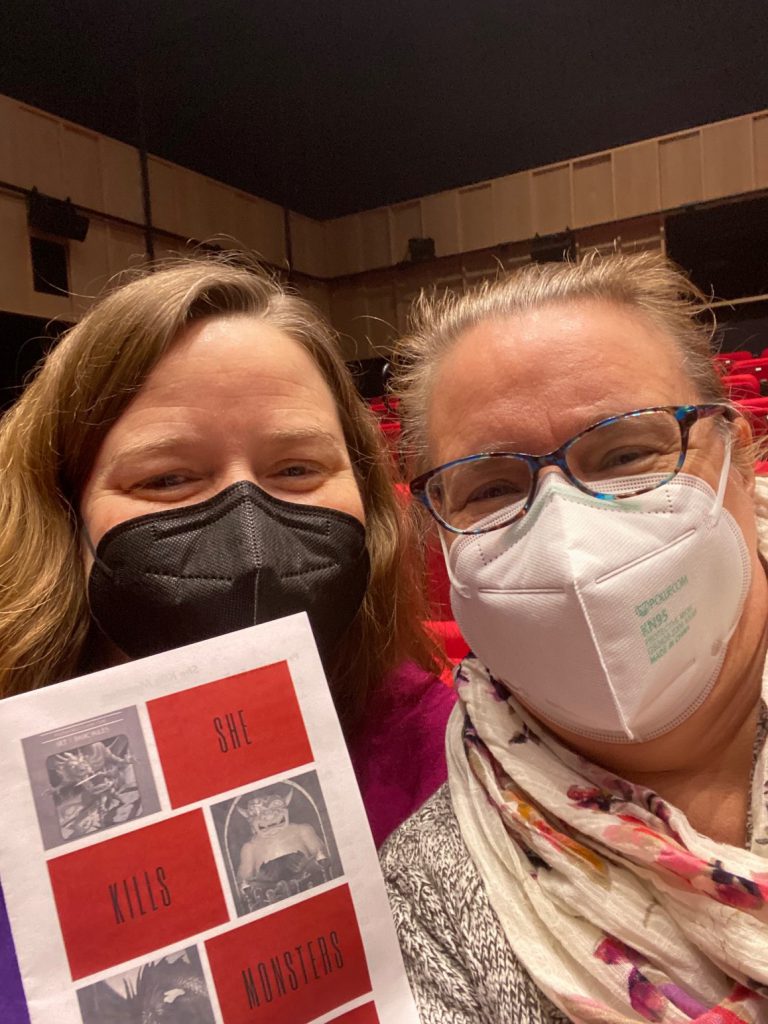
(3) participates visibly in the daily life of the school
Besides having lunch every day in the LPC, I actively engage in many events that are part of our school daily life including clubs where I have mentored biology club and GSA. When I don’t teach first block, I have enjoyed the leisurely start to my day (when I have time) to eat breakfast and chat with peers. All of these images show some of that participation.
In addition to the informal activities mentioned above, I have also run one seminar in my attempt to advocate for adding organic chemistry to our course line-up. I have also mentored several Independent Studies in the last couple of years that have mainly focused on topics in the sciences but have also branched beyond that into psychology or music therapy. No matter what the topic, I feel like I have learned just as much from the independent study experience as the students who have designed their course.
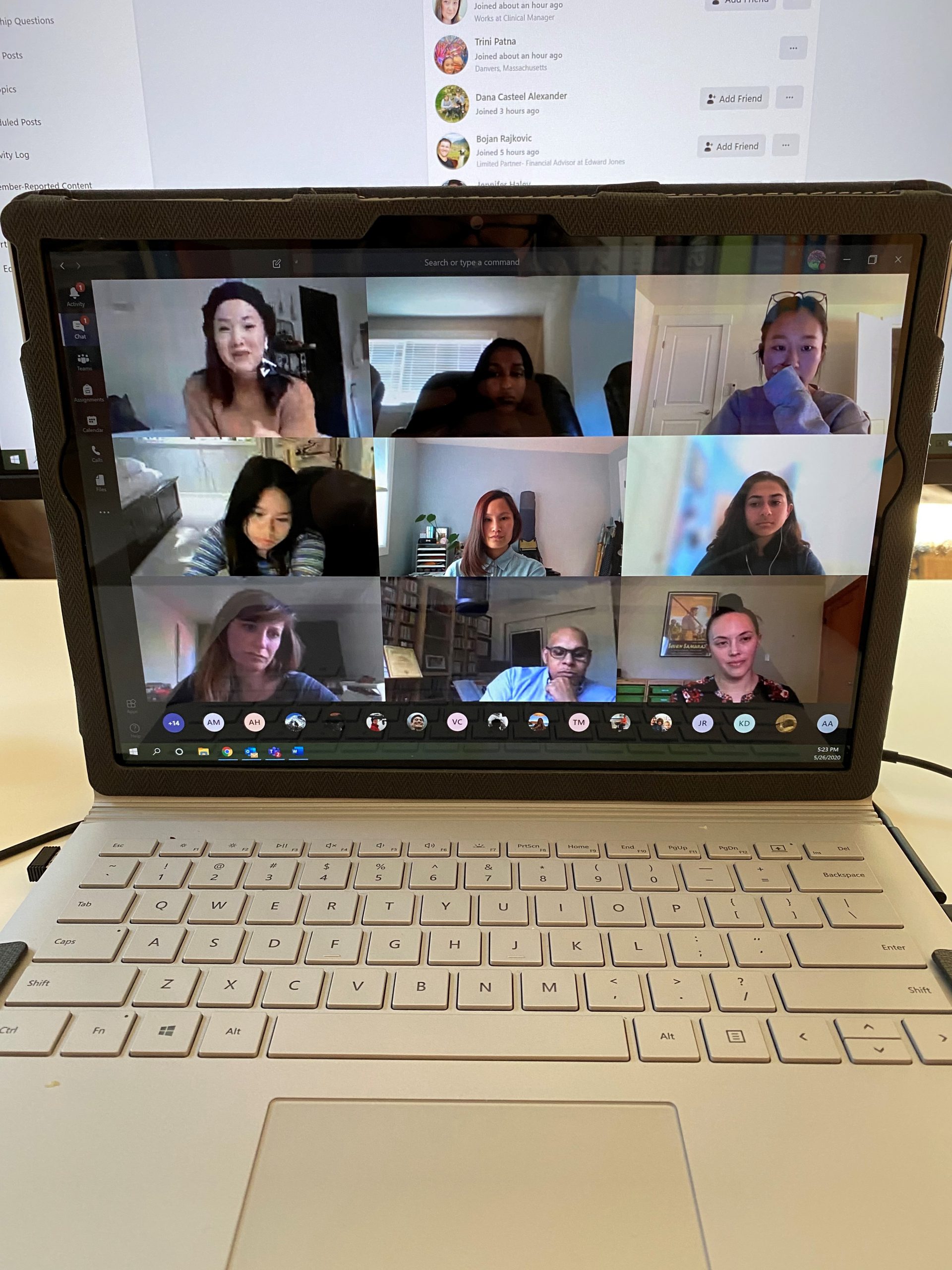
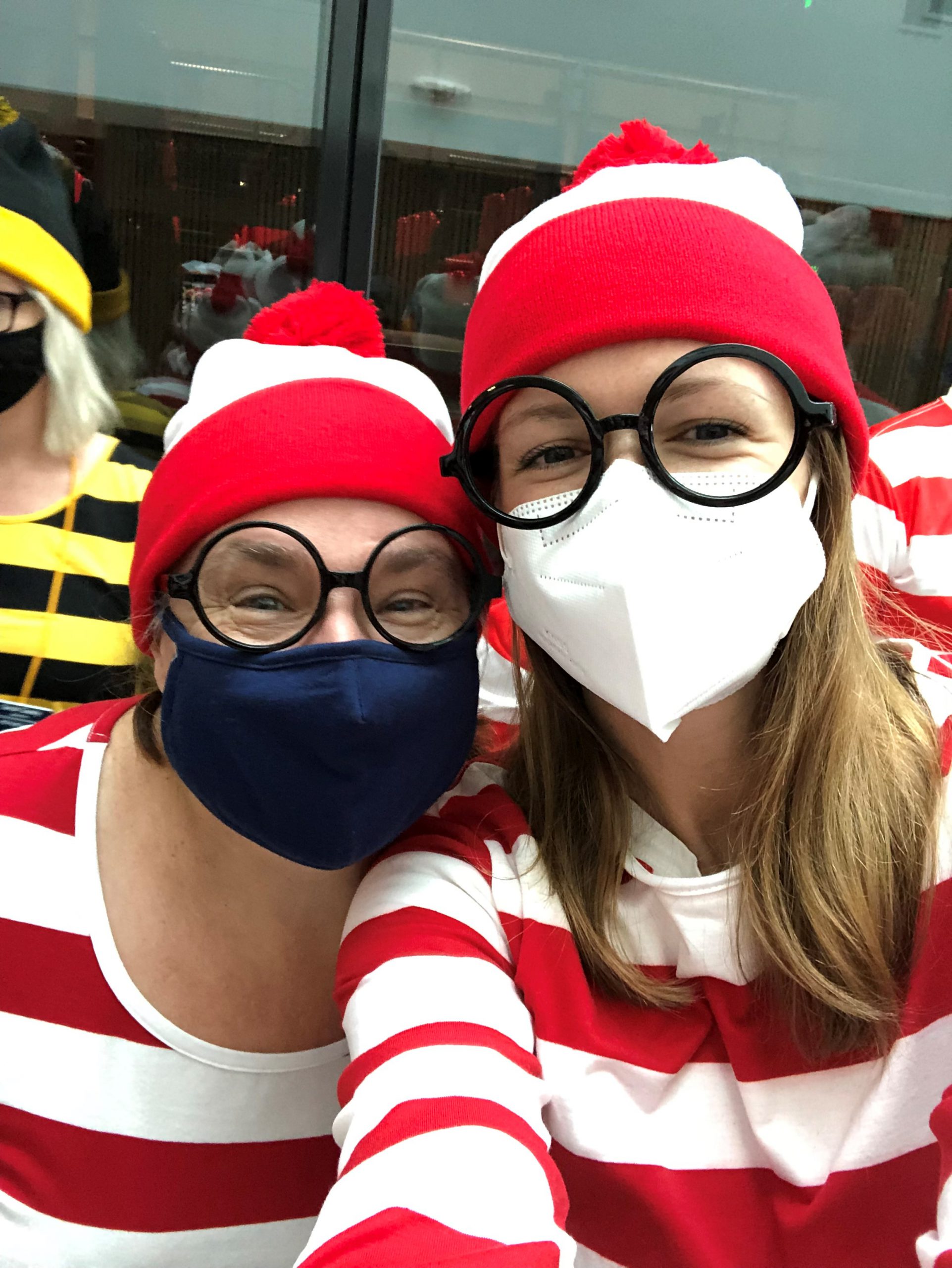
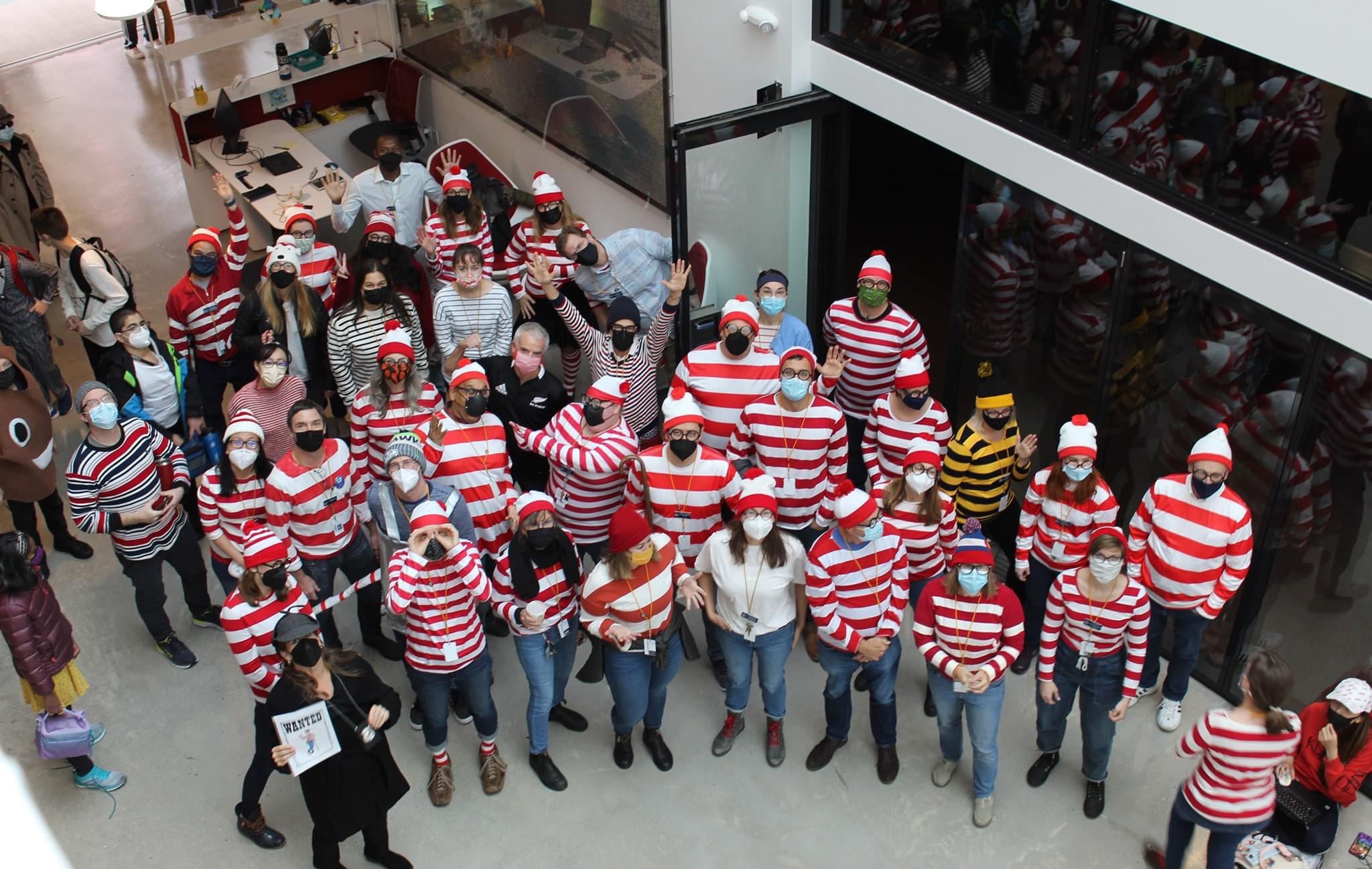
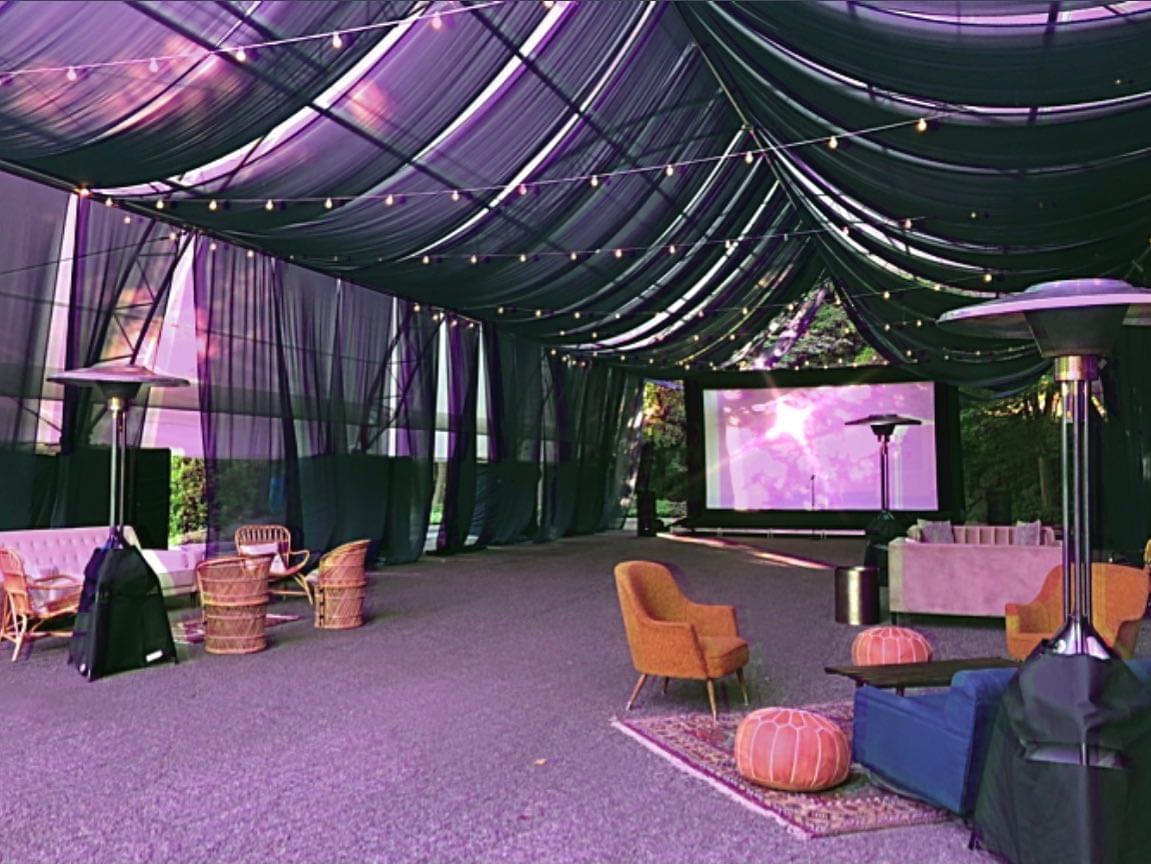
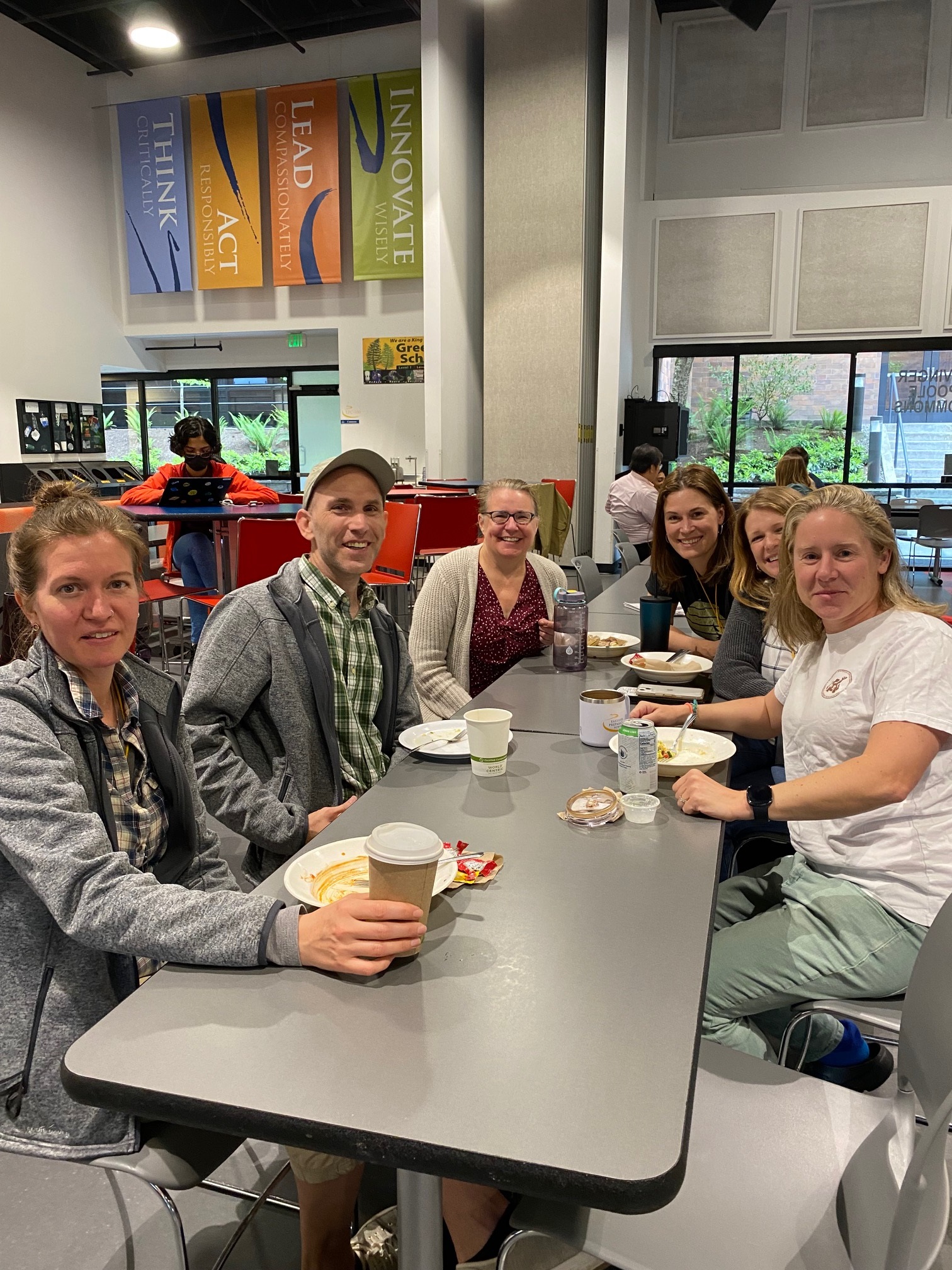
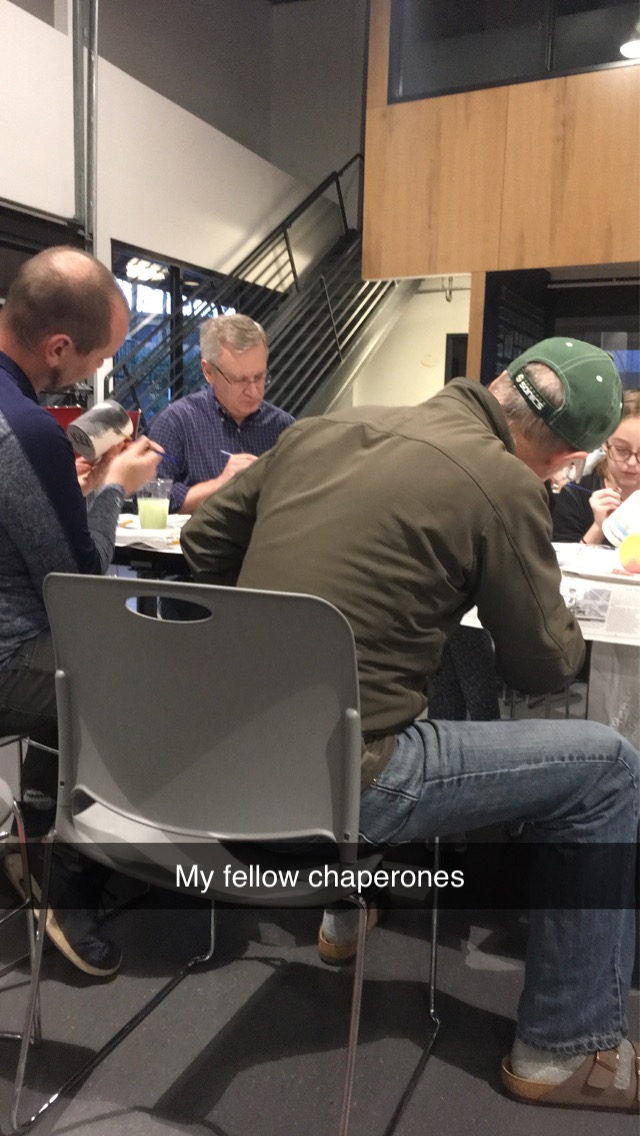
(4) recognizes and supports diversity in all its forms
In a survey that went out to peers in preparation for my PDP, one prompt asked How have you observed Anne recognizing and supporting diversity in all its forms?
Perhaps one of the best descriptions in how this happens comes from Steve Fassino:
“When co-teaching Algebra 2 with Anne, she was a big proponent of teaching in ways which recognized students as individuals and supported the diverse group of learners in the room. She was always open to changing approaches and experimenting, literally she created a science experiment measuring pH levels to help us understand Logarithms, with different techniques to help reach the different learners we have. Outside of the class, I can see Anne working with various cross-sections of students from sponsoring Pride Alliance, to running a math and videogaming EBC, to chatting it up with various different students at the homecoming dance-but-not-a-dance this year.”
In the above, Steve recognizes that I approach what I do in the classroom paying attention to providing the most degree of flexibility for how students approach a problem. I remind the kids that their brains are uniquely programmed to recognize patterns and that math and science are the recognition of patterns. So HOW they get there in their learning may be different but they can get there. The other thing that Steve recognizes is how I feel about the importance of building relationship with the student. That happens most often in the classroom but the interactions outside the classroom are just as important.